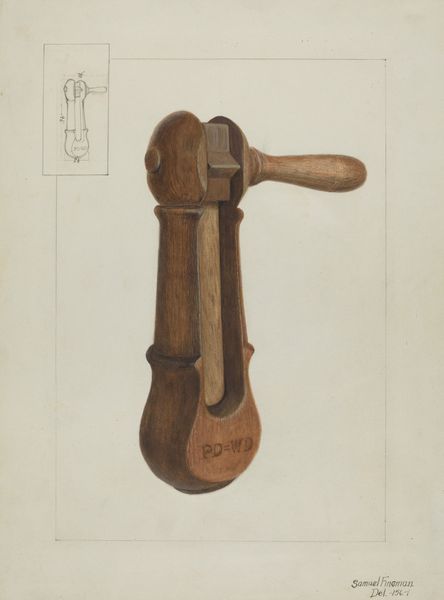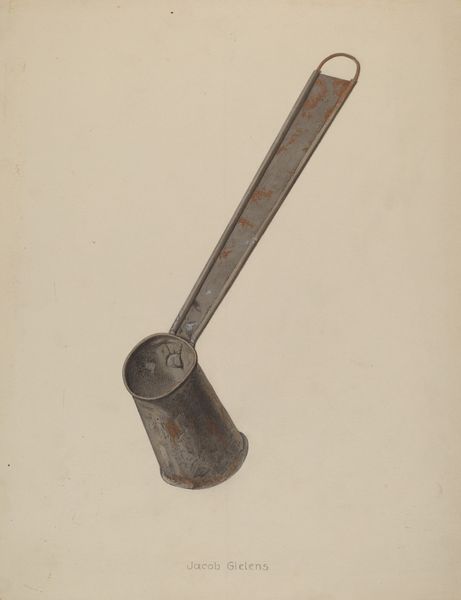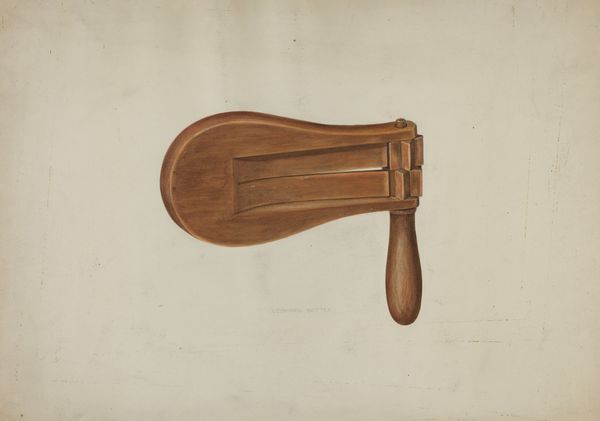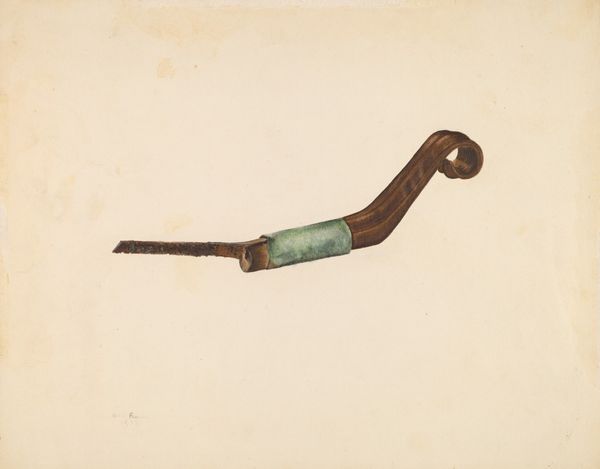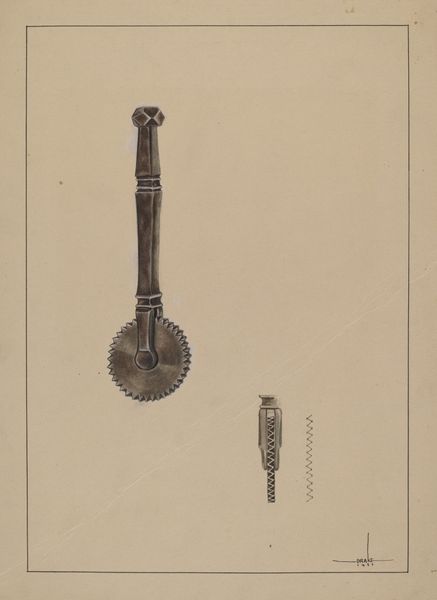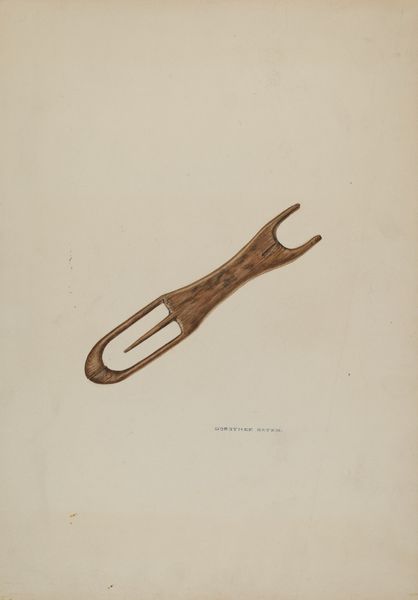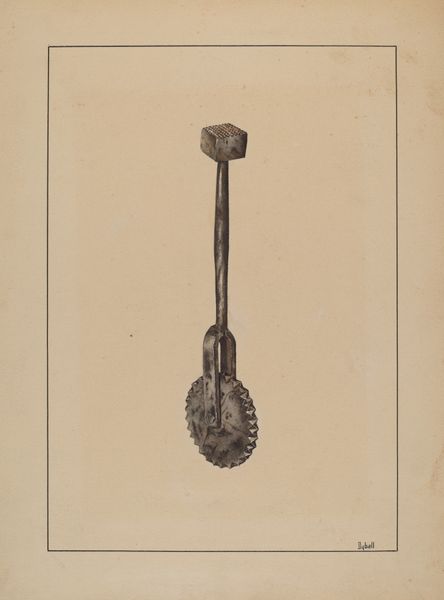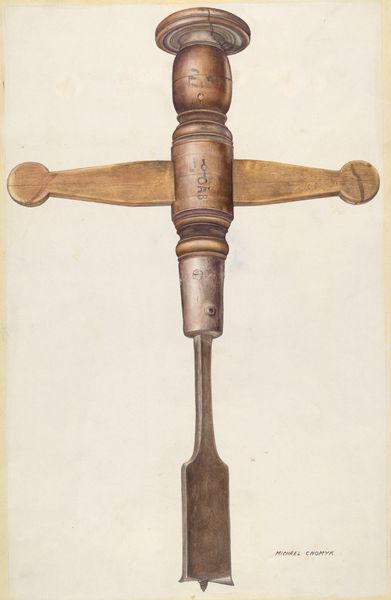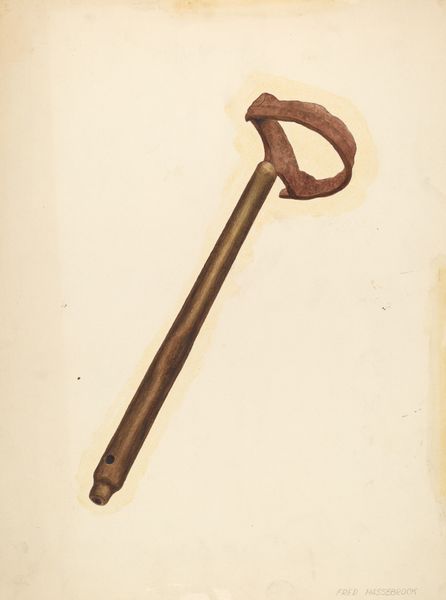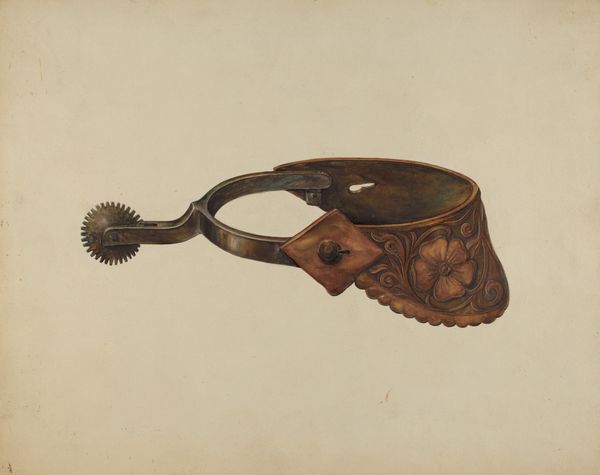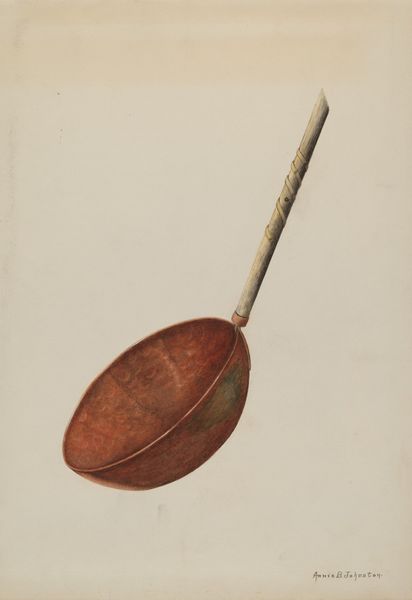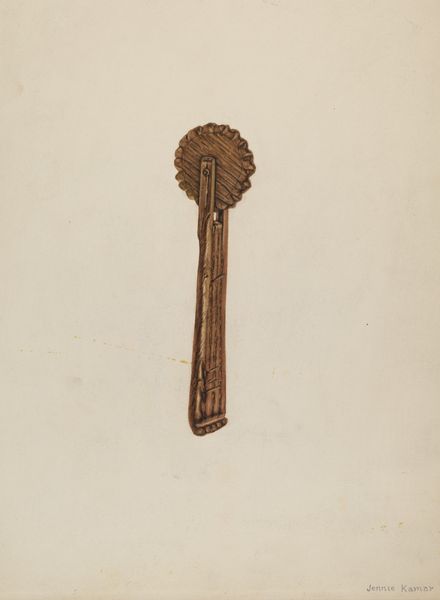
drawing, watercolor
#
drawing
#
charcoal drawing
#
watercolor
#
watercolour illustration
#
realism
Dimensions: overall: 49.4 x 40.5 cm (19 7/16 x 15 15/16 in.)
Copyright: National Gallery of Art: CC0 1.0
Editor: This is Alfred Koehn’s "Policeman's Rattle," from around 1939, done with watercolor and charcoal. I find the ordinariness of the subject matter…striking, actually. What does this choice of subject tell us? Curator: Indeed, it's quite a deliberate choice. Consider the time: 1939, on the cusp of immense global conflict. Focusing on something seemingly as innocuous as a policeman’s rattle invites us to question the power dynamics at play. Who holds authority? Whose voice is amplified, and whose is suppressed? Editor: So you're saying the image challenges our assumptions about safety and order? Curator: Precisely. Is the rattle a symbol of reassurance, or a tool of control? How might the artist be subtly critiquing the role of law enforcement in society, especially given the era’s political tensions? The choice of media also plays a part; the softness of watercolor, contrasted with the starkness of charcoal, can suggest a delicate balance about to be disrupted. Editor: That makes me wonder about the context of its creation. Were these objects particularly charged at that time? Curator: Absolutely. Think about the rise of totalitarian regimes, the increasing militarization. Even everyday objects could become symbols of oppression or resistance. Consider Walter Benjamin's "The Work of Art in the Age of Mechanical Reproduction." Could this unassuming piece be prompting a discourse around art’s role in shaping our perception of power and social order? Editor: It's incredible how much context changes my view of a seemingly simple drawing! I wouldn’t have considered these social power dynamics without this insight. Curator: That is precisely why engaging with art demands critical dialogue. Reflecting on art from different viewpoints, the historical and political frameworks framing it, opens spaces for a more inclusive and critical view of the world.
Comments
No comments
Be the first to comment and join the conversation on the ultimate creative platform.
